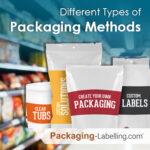Sustainable Packaging
The Environmental Challenges of Single-Use Packaging and the Path to Sustainable Solutions
In today’s dynamic consumer landscape, packaging serves multiple essential functions, from product protection to brand marketing and convenience enhancement. However, the widespread use of single-use packaging, especially plastic-based materials, has created an environmental crisis of unprecedented scale. Designed for one-time use and immediate disposal, single-use packaging is a major contributor to global waste and pollution. As awareness of sustainability grows among businesses and consumers alike, addressing these challenges through innovative and eco-friendly alternatives is no longer optional but an urgent necessity.
The Escalating Waste Crisis
One of the most pressing concerns surrounding single-use packaging is the massive accumulation of waste. According to the Environmental Protection Agency (EPA), packaging waste accounts for nearly 30% of total municipal solid waste in many countries. A significant proportion of this waste consists of plastic materials, which can take centuries to degrade. The persistence of plastic waste leads to widespread pollution in landfills, marine ecosystems, and natural environments, endangering wildlife and contributing to microplastic contamination.
Additionally, the sheer volume of single-use packaging discarded daily exacerbates landfill overflow, increasing the strain on waste management systems. Without decisive intervention, the long-term consequences of this waste crisis will continue to escalate, further jeopardising ecological balance and public health.
The Challenges of Recycling Infrastructure
While recycling is often promoted as a viable solution to packaging waste, the reality is more complex. Many packaging materials, particularly multi-layered plastics, are difficult to recycle due to their composition. These materials often combine different types of plastics, requiring specialised recycling facilities that are limited in availability. As a result, a substantial portion of supposedly recyclable packaging is either incinerated or ends up in landfills instead of being repurposed.
While some plastics are recyclable, they present significant challenges due to variations in material composition, collection inefficiencies, and contamination. Not all plastics can be easily reprocessed, as differences in their composition affect recyclability and require advanced sorting and processing facilities, further complicating waste management efforts. Contamination from food residues and non-recyclable components further reduces the efficiency of recycling programmes, making waste management more complex. Without substantial improvements in recycling infrastructure and consumer education, the potential of recycling to mitigate packaging waste remains constrained.
Shifting Trends in Paper-Based Packaging
Paper packaging has long been a staple in various industries, but recent advancements in technology have led to a resurgence in its adoption as a viable alternative to plastic. Businesses are increasingly shifting towards innovative paper-based solutions that maintain product integrity while addressing sustainability concerns. These new trends in paper packaging are driven by improvements in material science, enhanced barrier coatings, and the development of fibre-based alternatives to traditional plastic packaging. Some of the most effective paper-based solutions include:
Coated Paper Packaging: Advanced coatings enhance the moisture and grease resistance of paper, making it a practical substitute for plastic in food and beverage packaging.
Moulded Pulp Packaging: Manufactured from recycled paper and natural fibres, moulded pulp serves as an eco-friendly replacement for plastic trays, clamshells, and protective packaging.
Recyclable Paper Packaging: Unlike composite or plastic-laminated packaging, fully recyclable paper materials ensure they can be reprocessed efficiently through standard recycling channels.
Leading innovators in sustainable packaging, such as FibrilX, are driving advancements in high-performance paper-based materials that meet the demands of both businesses and consumers while reducing environmental impact.
A Collective Effort for a Sustainable Future
Transitioning to sustainable packaging requires a concerted effort from multiple stakeholders. Businesses must prioritise research and development to create viable alternatives, governments need to implement and enforce policies that promote eco-friendly solutions, and consumers should make informed choices by supporting brands committed to sustainability.
By addressing the issues of waste accumulation, inefficient recycling systems, and evolving consumer expectations, the packaging industry can move towards a future that is both functional and environmentally responsible. The time for change is now, embracing sustainable solutions is not just beneficial for the planet but essential for long-term economic and ecological well-being.
This article has been submitted byNader Mayeli
.


